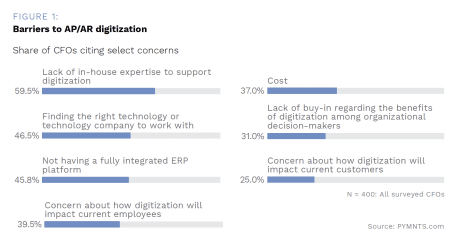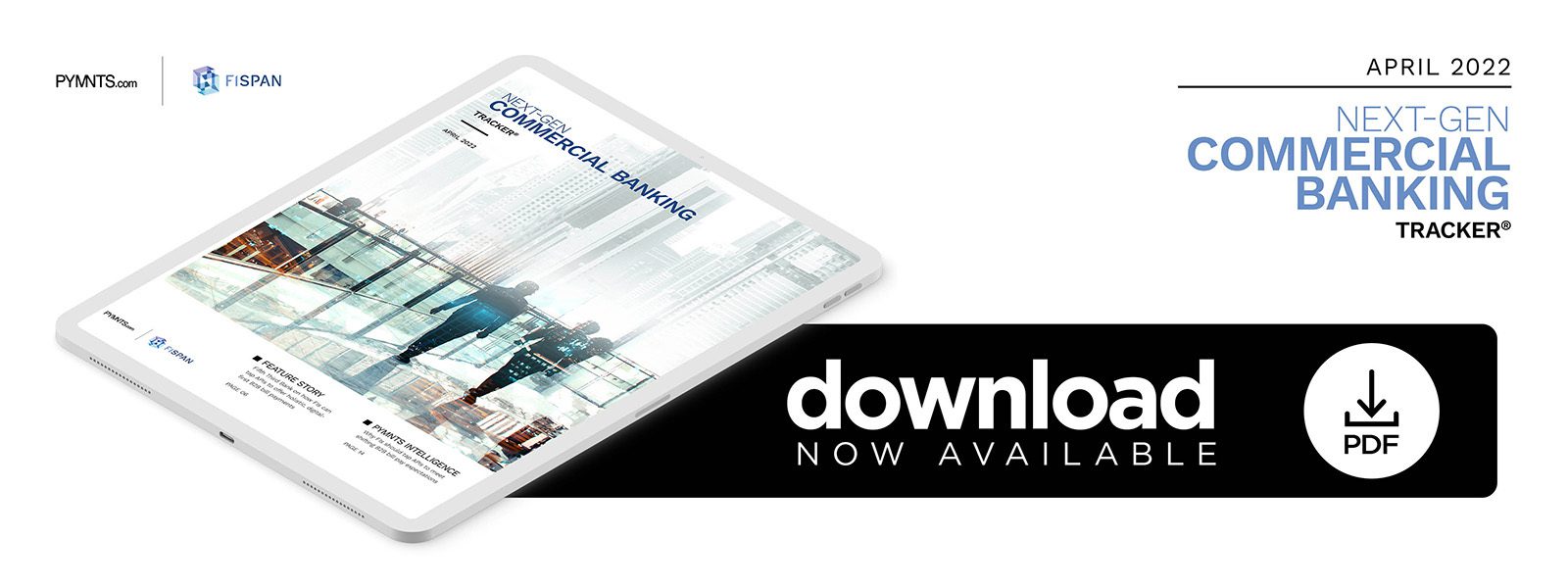PYMNTS Intelligence: How APIs Can Help FIs Match Changing Business Bill Pay Needs

The pandemic prompted businesses to reconsider their typical payment experiences, with many chief financial officers (CFOs) and other business leaders taking steps to digitize previously manual operations. One study found that 76% of accounting and finance leaders said the global health crisis fast-tracked their accounts payable (AP) digital transformation initiatives.
As more businesses turn to online channels to seek out new vendors, suppliers or industry partners, the need to innovate both consumer-facing and B2B transactions such as bill payment is becoming imperative. Reports predict that United States B2B eCommerce sales will exceed $1 trillion by the end of this year, making frictionless, digitally optimized bill pay a must. Financial institutions (FIs) have an opportunity to better engage and retain corporate customers by offering these solutions, which can help firms navigate the challenges they face in digitizing.
One PYMNTS study found that 24% of large firms’ B2B payments are still made via paper checks. Enabling access to seamless bill pay can help break companies’ lingering reliance on manual payment methods, freeing up both time and resources as well as helping to boost corporate clients’ loyalty toward their financial partners.
This month, PYMNTS looks at the B2B bill payment challenges that many corporates still face and how companies’ needs and expectations for these experiences are shifting. It also examines how supporting seamless bill pay using application programming interface (API) technology can help FIs engage and retain corporate clients in this changing payment environment.

Meeting Shifting B2B Bill Payments Needs
Many companies continue to depend on legacy B2B payments infrastructure that adds untenable costs and frictions to the process. A PYMNTS study found that 31% of banks’ corporate clients cited a lack of payment options as a significant problem for their organizations, and another PYMNTS report found that businesses still struggle with payment delays. The pandemic heightened this challenge, with 74% of companies that generate annual revenues between $25 million and $100 million saying that the health crisis worsened their delayed payments volume.
Companies have moved to innovate their AP and accounts receivable (AR) processes accordingly, but many still face challenges in digitizing operations with the speed necessary to keep up with their competitors. Firms have accelerated their use of electronic payment tools to streamline bill pay and other B2B payment processes, but many find it difficult to create fully digital payment flows.
PYMNTS data showed that 73% of companies in the wholesale trade industry are now using more automated clearinghouse payments, but CFOs in another PYMNTS report cited severe barriers to payments innovation. Among these were a lack of an enterprise resource planning (ERP) or treasury management system that can support disparate payment solutions and failure to find the right technology partner to help them move their digitization efforts forward.
Banks have a key opportunity to stand out in the digital payments marketplace by offering API-powered bill payment solutions to help companies overcome these barriers. Tapping APIs allows FIs to provide the tailored, digital-first bill pay experiences their clients need both swiftly and seamlessly.
FIs’ investment in APIs is on the rise as a result. PYMNTS data revealed that 47% of banks and credit unions (CUs) had invested in the technologies by the end of 2021, up from 35% in 2019, and 25% also noted plans to invest in APIs this year. Banks are also increasingly looking to APIs as drivers of future revenue, with 90% of FIs surveyed planning to use APIs to generate further revenue among their existing customers. FIs will want to prioritize finding the right technology partners to help them keep up with their business clients’ growing needs for streamlined bill pay and other digital-first experiences.

